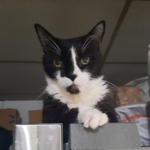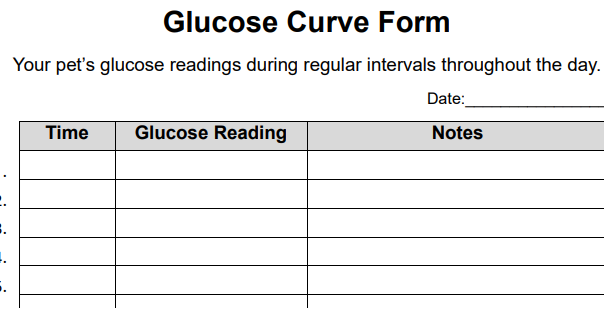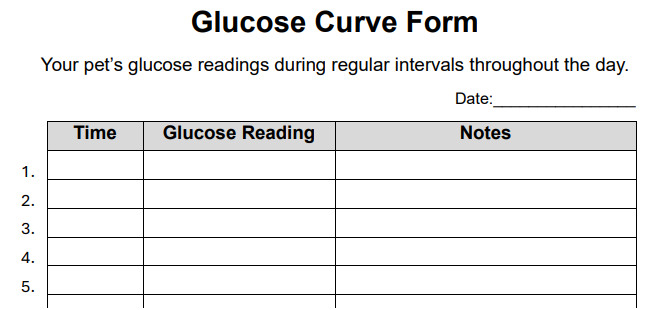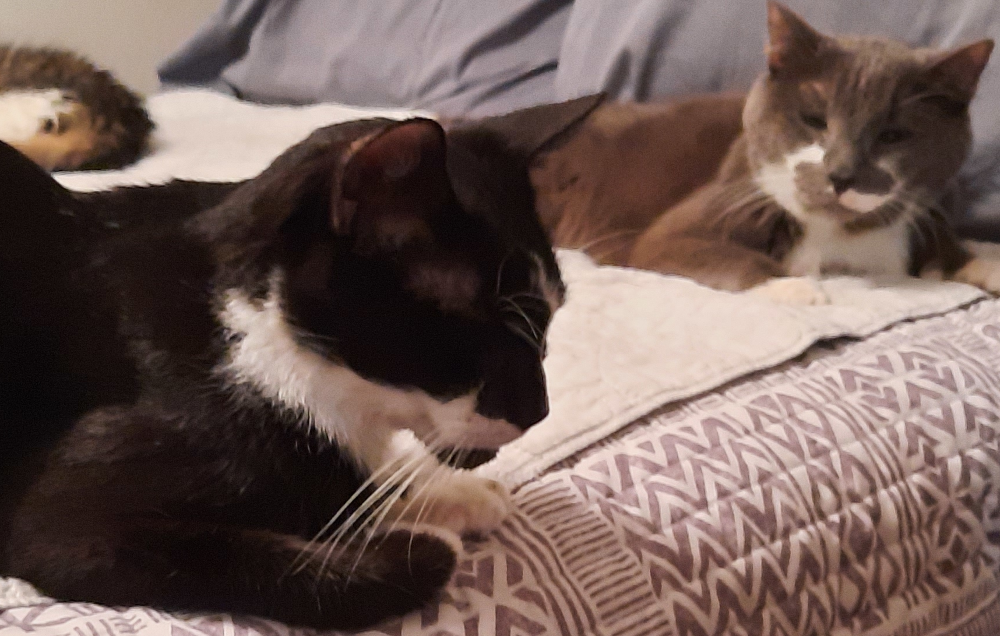 When your veterinarian diagnoses your beloved pet with diabetes mellitus, it can feel overwhelming. Suddenly, you’re learning about insulin injections, dietary changes, and glucose monitoring. Among the most valuable tools in your diabetes management toolkit is the glucose curve—a systematic way to track your pet’s blood sugar levels throughout the day. This monitoring method provides critical information that helps your veterinarian fine-tune your pet’s treatment plan for optimal health. Download our Blank Glucose Curve Form to fill out and track your pet’s glucose levels during the day.
When your veterinarian diagnoses your beloved pet with diabetes mellitus, it can feel overwhelming. Suddenly, you’re learning about insulin injections, dietary changes, and glucose monitoring. Among the most valuable tools in your diabetes management toolkit is the glucose curve—a systematic way to track your pet’s blood sugar levels throughout the day. This monitoring method provides critical information that helps your veterinarian fine-tune your pet’s treatment plan for optimal health. Download our Blank Glucose Curve Form to fill out and track your pet’s glucose levels during the day.
What Is a Glucose Curve and Why Is It Important?
 A glucose curve is a series of blood glucose measurements taken at regular intervals throughout the day. These readings create a “curve” when plotted on a graph, showing how your pet’s glucose levels rise and fall in response to insulin injections, meals, and daily activities.
A glucose curve is a series of blood glucose measurements taken at regular intervals throughout the day. These readings create a “curve” when plotted on a graph, showing how your pet’s glucose levels rise and fall in response to insulin injections, meals, and daily activities.
Unlike a single glucose reading that only provides a snapshot of your pet’s condition at one moment, a glucose curve offers several crucial benefits:
- Reveals the effectiveness of insulin doses: Shows how well the current insulin dose is working to lower your pet’s blood glucose
- Identifies the insulin’s peak action time: Determines when the insulin is working most effectively
- Measures the duration of insulin effect: Shows how long the insulin remains active in your pet’s system
- Detects periods of dangerously low blood sugar: Helps prevent hypoglycemia (low blood sugar), which can be life-threatening
- Identifies periods of harmful high blood sugar: Reveals if your pet experiences prolonged hyperglycemia (high blood sugar)
- Guides individualized treatment plans: Allows your veterinarian to customize insulin timing and dosage specifically for your pet
For senior pets especially, proper diabetes management is crucial for maintaining quality of life and preventing complications like cataracts, recurring infections, and nerve damage.
When Should You Perform a Glucose Curve?
Your veterinarian may recommend performing a glucose curve in several situations:
- After your pet is initially diagnosed with diabetes
- When starting insulin therapy or changing insulin types
- When adjusting insulin dosages
- If your pet shows signs of poor diabetes control (increased thirst, urination, weight loss)
- Every 3-6 months as part of routine monitoring
- If your pet is acting unusually (lethargy, weakness, disorientation)
- During periods of illness, stress, or medication changes
How to Use Our Glucose Curve Form
Our downloadable glucose curve form makes it easy to record and organize your pet’s data. Here’s how to use it effectively:
Step 1: Preparation
- Download and print the glucose curve form
- Gather your supplies: glucose meter, test strips, timing device (usually watch, phone), and treats for positive reinforcement
- Choose a day when you can dedicate time to consistent monitoring throughout the day
- Ensure your pet follows their normal routine for meals and activities
- Write the current date at the top of the form
Step 2: Establish a Testing Schedule
Typically, readings are taken every 1-2 hours over a 12-24 hour period, depending on your veterinarian’s recommendation. Common intervals include:
- Every hour for rapid-acting insulin
- Every 2 hours for intermediate-acting insulin
- Every 3-4 hours for longer-acting insulin
Step 3: Record Your Readings
For each reading, record:
- Time: Note the exact time of each glucose check in the “Time” column
- Glucose Reading: Record the numerical blood glucose value from your meter in the “Glucose Reading” column
- Notes: Document important events such as:
- When meals are given
- When insulin is administered and the dose
- Any unusual behaviors or symptoms
- Activity levels
- Water consumption
- Any treats or additional food items
- Environmental factors (stress, visitors, travel)
Step 4: Complete the Curve
 Continue taking readings at your established intervals until you’ve completed the full monitoring period recommended by your veterinarian.
Continue taking readings at your established intervals until you’ve completed the full monitoring period recommended by your veterinarian.
Tips for Accurate Readings
The value of a glucose curve depends entirely on the accuracy of your data. Follow these tips to ensure reliable results:
- Use proper technique: Follow the manufacturer’s instructions for your glucose meter
- Be consistent: Take blood samples from the same location when possible
- Minimize stress: Create a calm environment for testing
- Maintain routine: Keep your pet’s feeding schedule, exercise routine, and insulin administration as normal as possible
- Note deviations: If anything unusual happens, record it in the notes section
- Stay organized: Number your readings consecutively to avoid confusion
 Record immediately: Write down readings as soon as you take them to prevent errors
Record immediately: Write down readings as soon as you take them to prevent errors
Interpreting Glucose Curve Results
While your veterinarian will provide professional interpretation of your completed glucose curve, understanding some basic patterns can help you become more engaged in your pet’s care:
Key Values to Look For:
- Nadir (lowest glucose level): Ideally between 80-150 mg/dL
- Peak (highest glucose level): Typically occurs soon after meals
- Duration of insulin effect: How long before glucose levels begin to rise again
- Average glucose level: The overall blood sugar control throughout the day
Common Patterns and What They Mean:
- Consistently high readings: May indicate insufficient insulin dose or insulin resistance
- Dramatically low readings: Could signal too much insulin, requiring immediate dose adjustment
- Rapid drops: May indicate the insulin is acting too quickly
- Short duration of effect: Could mean more frequent insulin administration is needed
- Somogyi effect: A pattern where blood glucose drops too low, triggering a stress response that causes it to rebound very high
Using Your Glucose Curve Results
After completing your glucose curve:
- Share results promptly: Send or bring your completed form to your veterinarian
- Discuss findings: Review the results together and ask questions
- Implement adjustments: Follow your veterinarian’s recommendations for insulin dose, timing, or type changes
- Schedule follow-up: Plan for any needed rechecks or future curves
- Keep records: Save your glucose curves to track patterns over time
Beyond the Glucose Curve: Comprehensive Diabetes Management
While glucose curves are invaluable, they’re just one component of comprehensive diabetes care. Your veterinarian may also recommend:
- Consistent diet: Specially formulated diabetic diets or consistent, measured feeding
- Regular exercise: Appropriate activity to help regulate blood sugar
- Weight management: Maintaining optimal weight to improve insulin sensitivity
- At-home monitoring: Regular glucose checks between curves
- Regular check-ups: Routine veterinary examinations
- Monitoring for complications: Watching for symptoms of diabetes-related health issues
The Emotional Side of Pet Diabetes Management
Managing a diabetic pet requires dedication and can sometimes feel overwhelming. Remember that:
- Your efforts make a tremendous difference in your pet’s quality of life
- The learning curve gets easier with time and practice
- Small improvements in glucose control add up to significant health benefits
- Your veterinarian is your partner in this journey
- Connecting with other pet parents managing diabetes can provide valuable support
Conclusion
Taking the time to perform and record accurate glucose curves is one of the most valuable things you can do for your diabetic pet. This detailed information allows your veterinarian to fine-tune treatment, prevent dangerous complications, and help your senior companion maintain the best possible quality of life.
By downloading our glucose curve form and following the guidelines above, you’re taking an important step toward becoming an expert in your pet’s diabetes management. Your dedication to monitoring and record-keeping directly translates to better health outcomes and more quality time with your beloved companion.
Remember, diabetes management is a journey of continuous learning and adjustment. With persistence, partnership with your veterinarian, and tools like regular glucose curves, your senior pet can continue to thrive despite their diabetes diagnosis.
Note: While this information provides general guidance, always follow your veterinarian’s specific recommendations for your pet’s individual needs. Glucose testing protocols, target ranges, and treatment goals may vary based on your pet’s unique health profile.





